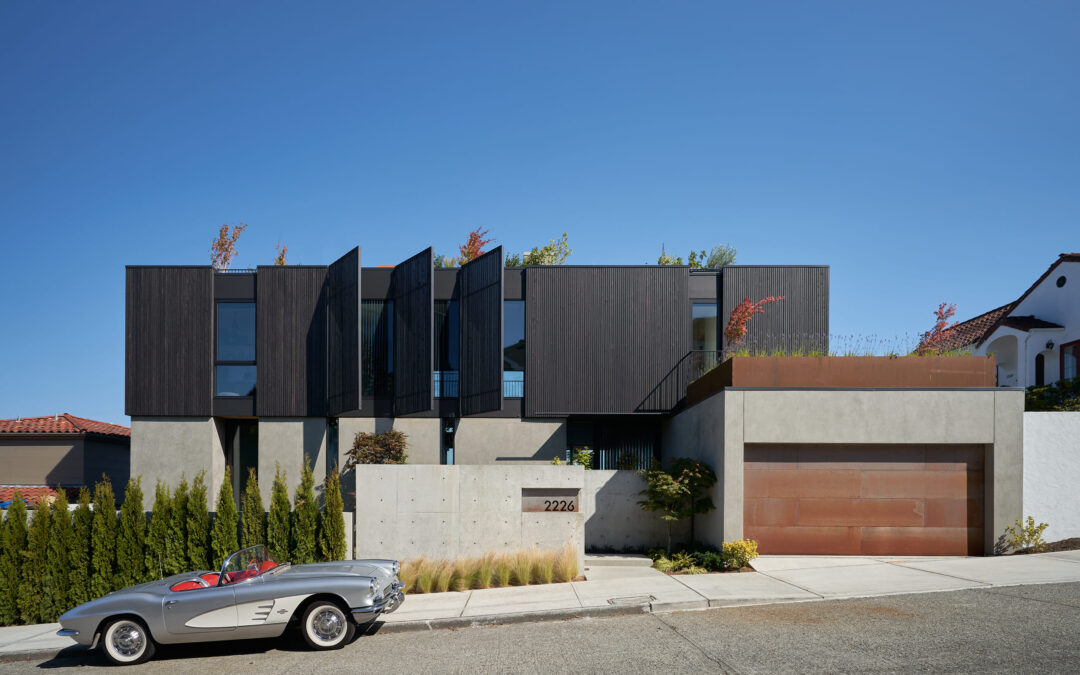Spread across two main living levels as well as a basement that opens out onto the pool terrace and a rooftop level with extensive gardens, the program for project Sound House was unique in that it needed to accommodate a large family of two adults and six children. Clients Brandon and Sarah Ebel each had three children and they combined their families and homes for the first time with this build.
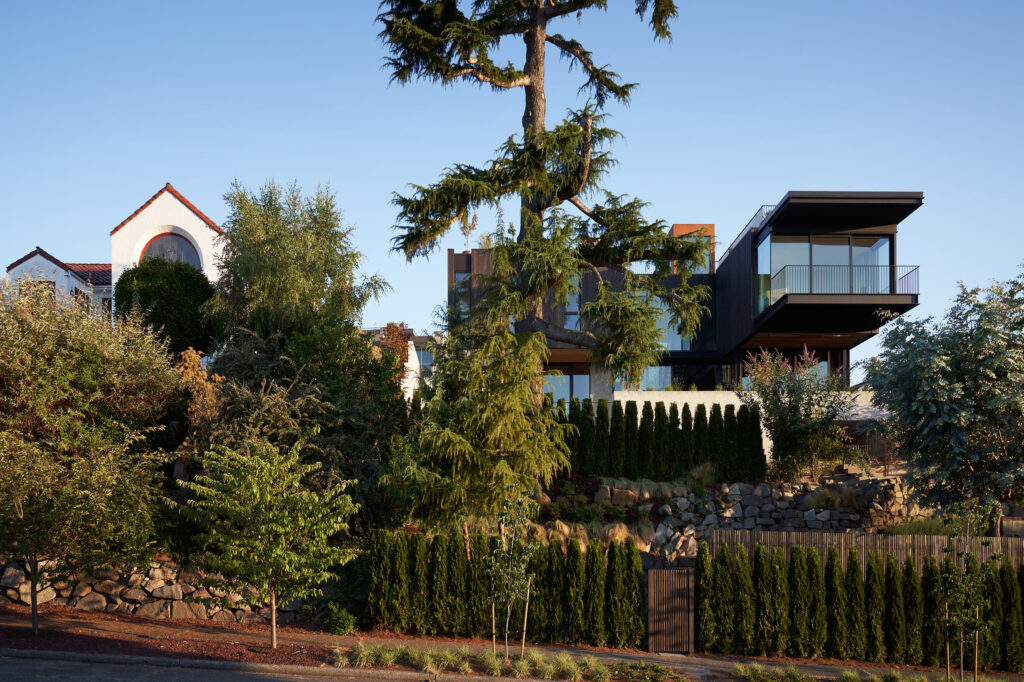
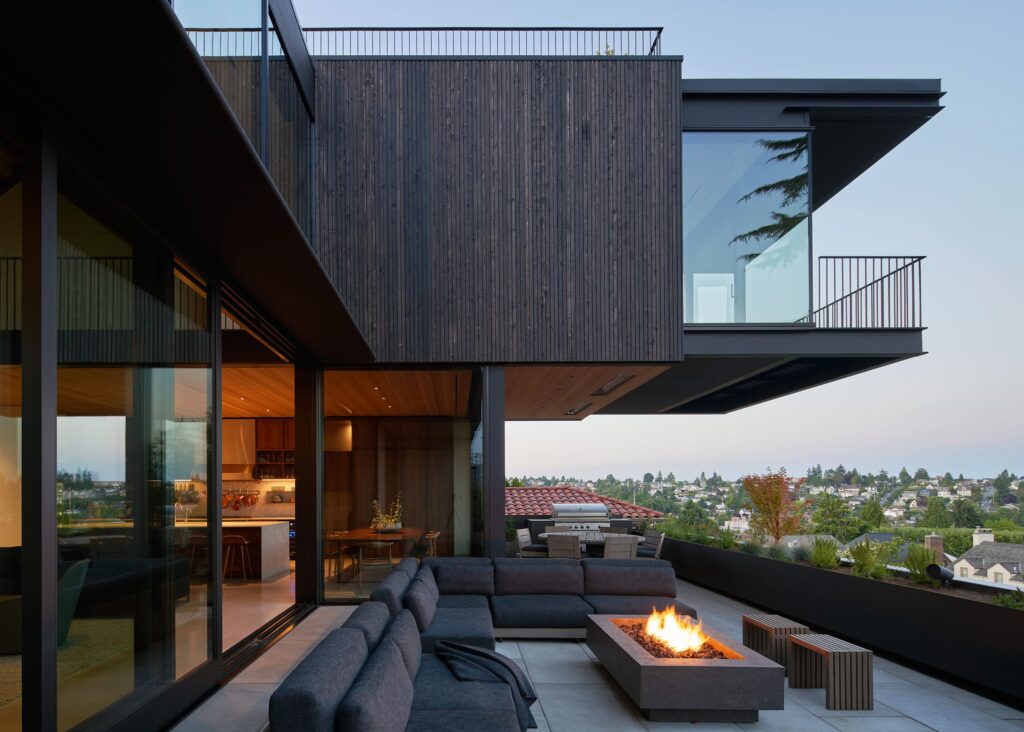
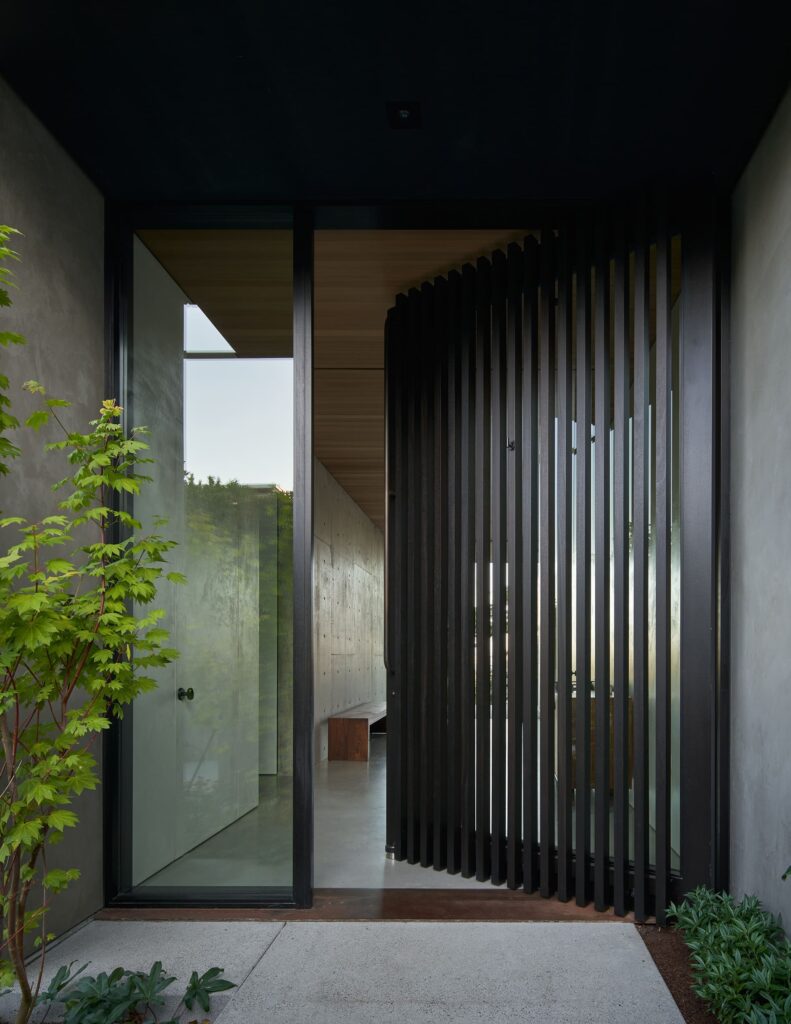
‘Sound House is a good example of the clients being very involved in the design and construction process and at the same time really trusting the architects and the work they do. ‘That trust is such a huge part of the design and construction process allowing a project vision to be born and then realised,’ says design principal Jon Gentry AIA.
Each member of the house had unique needs and desires for how the spaces should function. For Brandon, a music lover and owner of a local record label, intertwining audio throughout the house and creating a space for his large record collection was a high priority. For Sarah, a NYT best selling author and chef extraordinaire, having calm refuges to write, a library to house her many books, and a large kitchen to cook for family and friends was key.
For the kids, the aim was to create their own private spaces to escape and also a dedicated kids area to play and do homework with good connections to the family living space. The house is designed to be enjoyed by all members of the family with plenty of living space and access to the many exterior terraces and roof decks. Creating a house to gather within was of utmost importance.
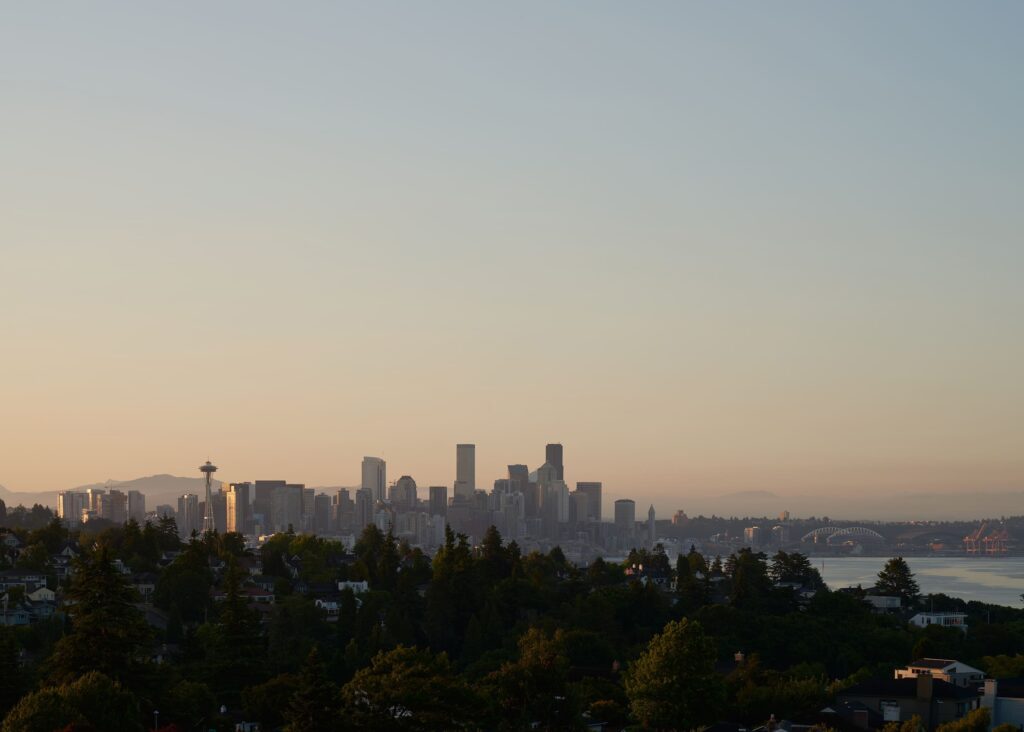

Located in Seattle’s Magnolia neighborhood, this elevated peninsula offers expansive views and is a 511sq metre family home replacing the existing house built in the 1920’s. From the extensive views, the music playing, and the six kids that inhabit the house – Sound House seemed like the perfect name for this project.
There was an existing plateau at the top of the house where the new structure is placed. An existing series of terraced gardens and pathways were reworked to form a dining terrace and pool terrace nestled into the slope. One of the driving factors in the design of the house was the almost 360-degree views from the site and the design allows these to be maximised on each of the levels.
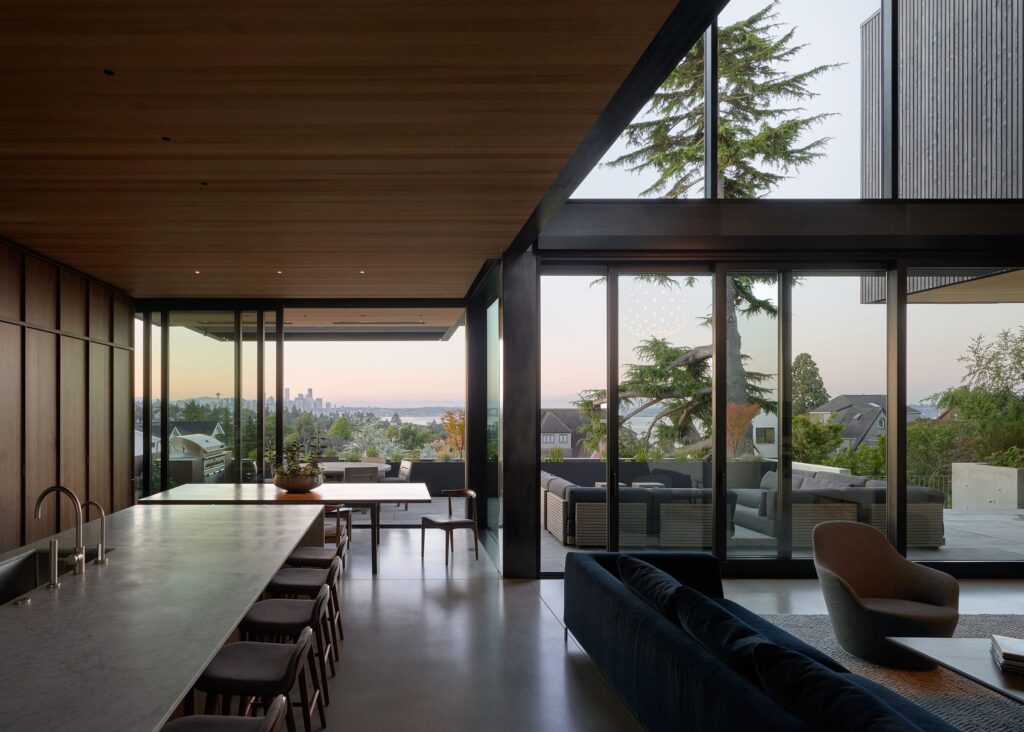
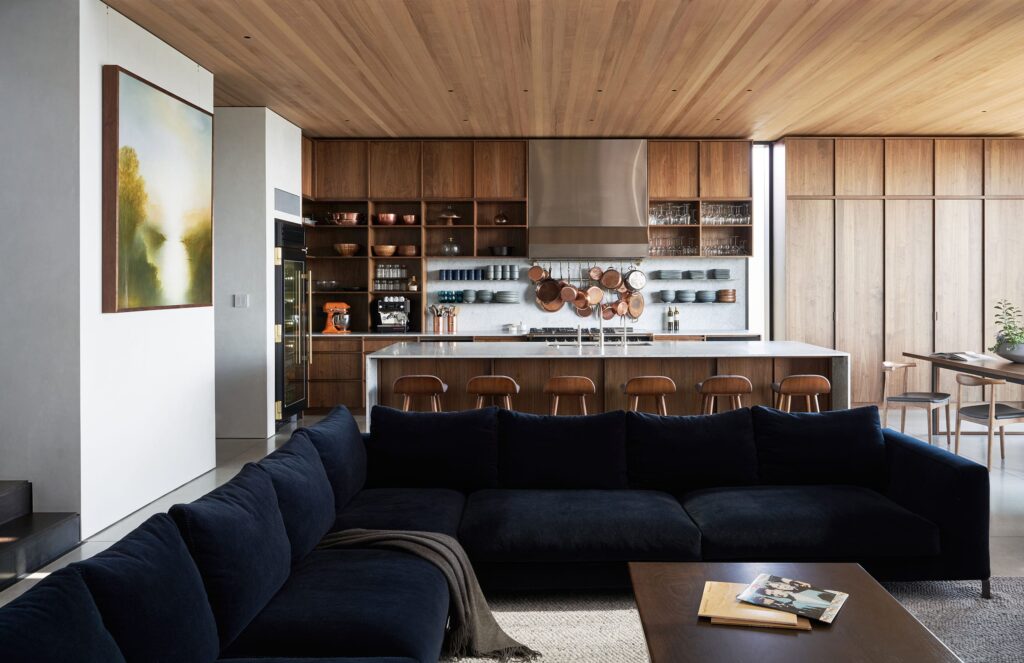
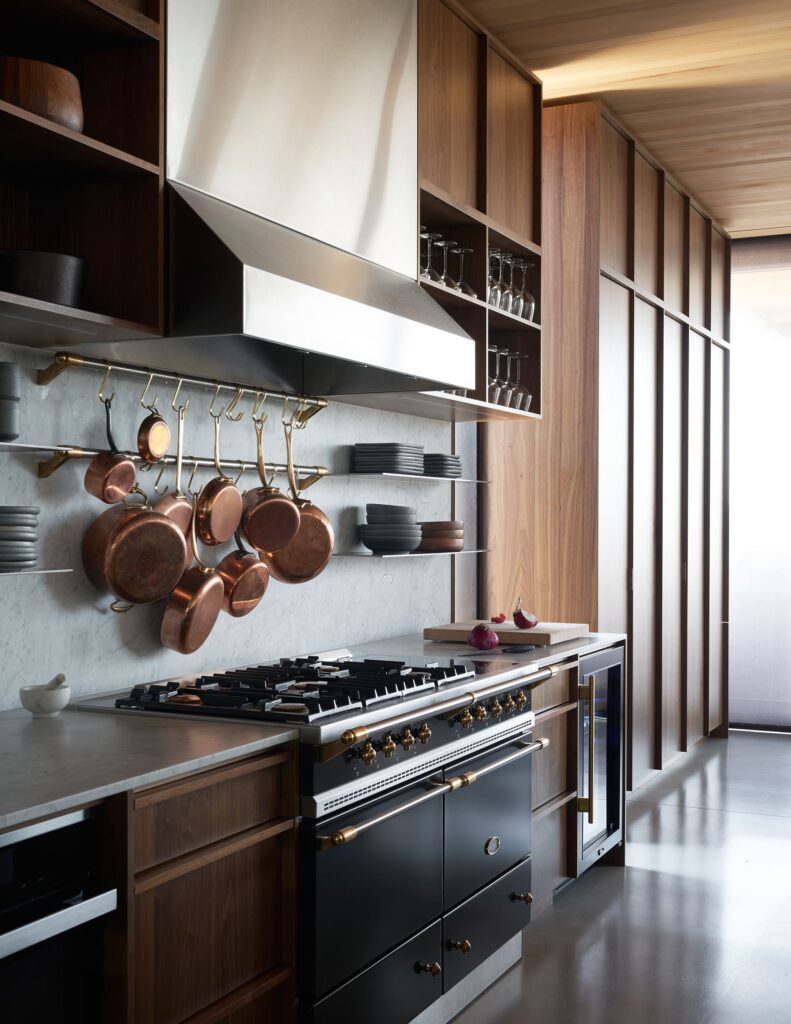
From the upper north street the house appears as two stacked horizontal bars with the materiality of the lower mass grounding the building and lightweight porous upper level revealing hints of the interior space. The upper level is clad in vertical tight knot cedar slats which open up to form screen walls over portions of the upper level glazing. Entering the house through a wide hallway creates a physical and visual connection from front to back and a glimpse of the views beyond. The rear of the house opens up to the garden terraces and swimming pool. The main level is largely glazed on this side allowing the living spaces a direct relationship to the terraces.
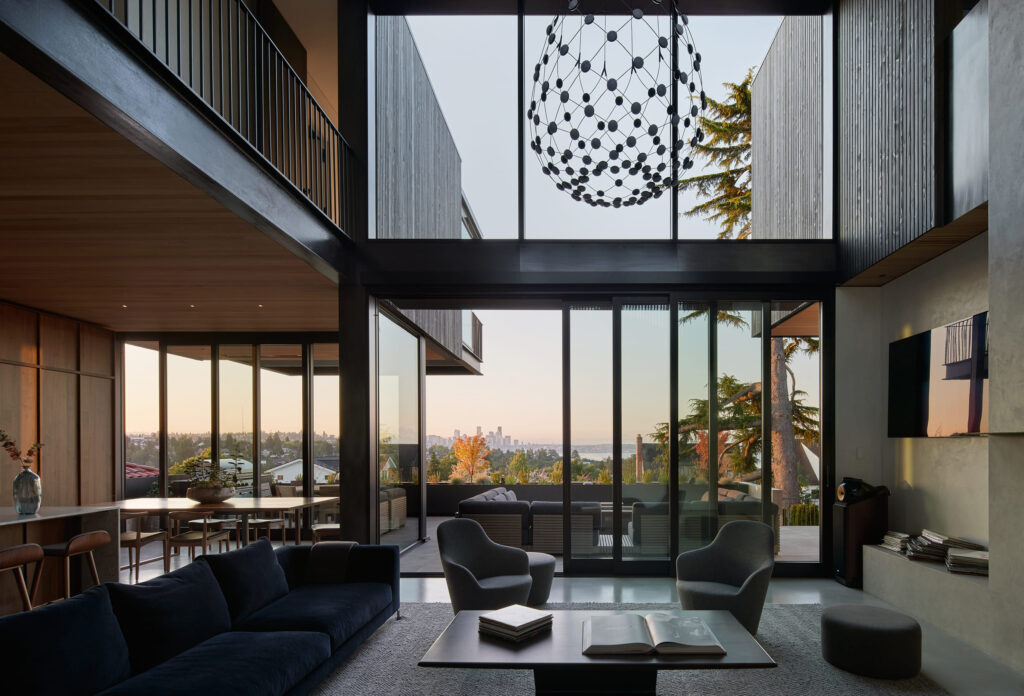
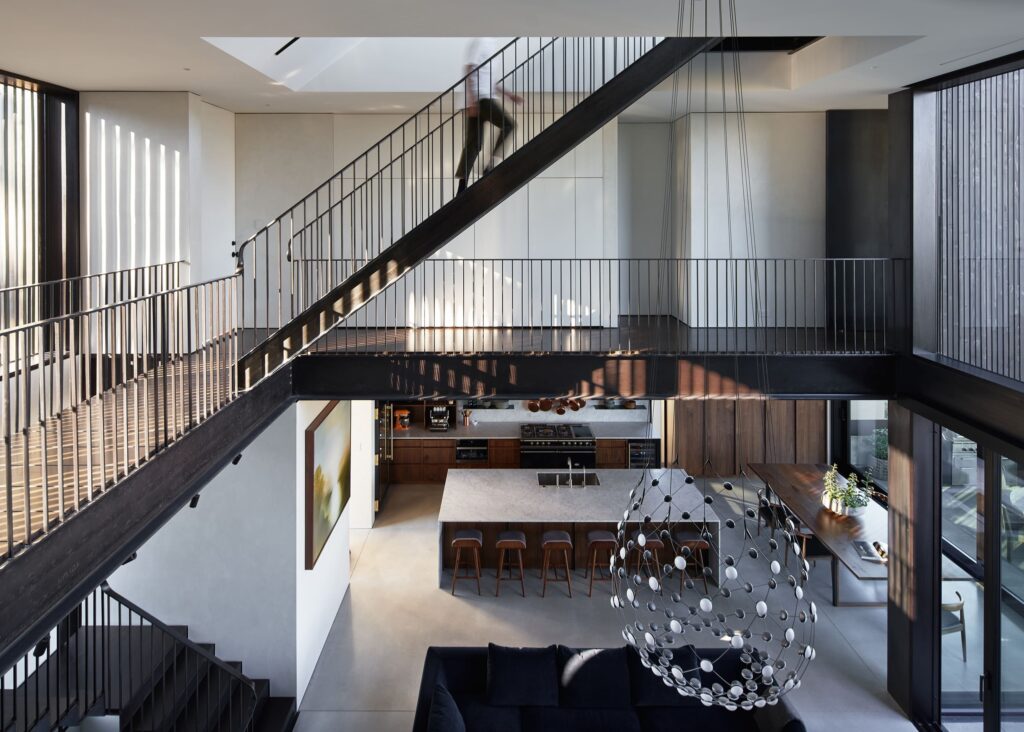
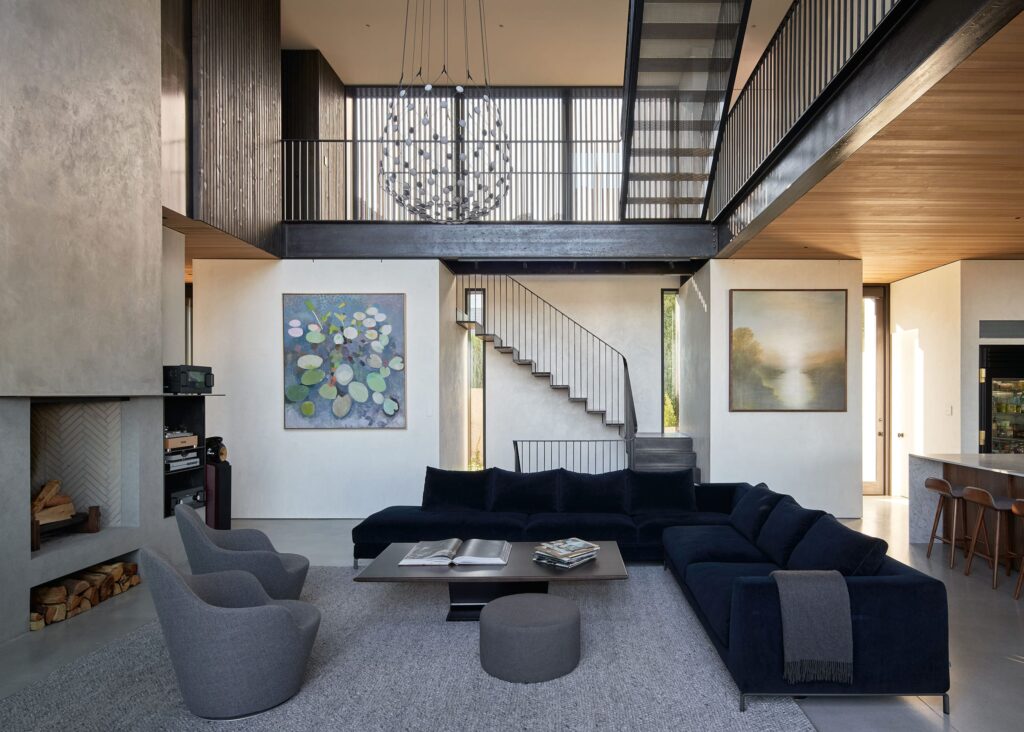
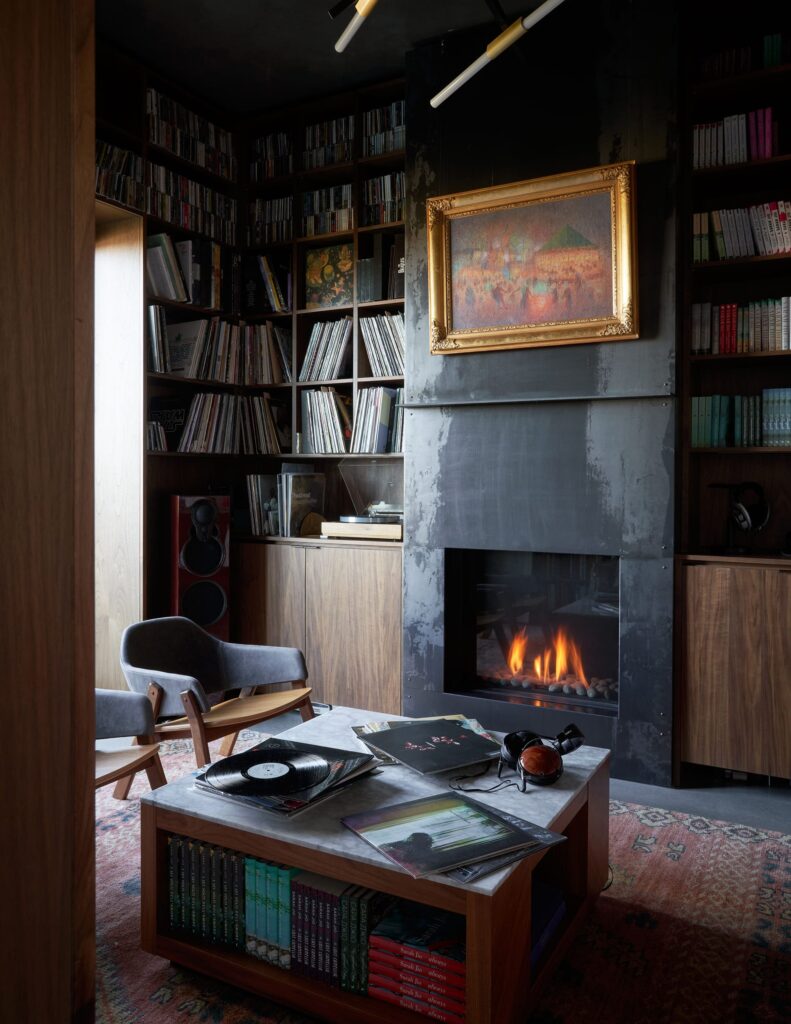
At the heart of the house is a double height living space with wood burning fireplace and chimney that extends vertically through the space. Passing from public to private space as you ascend through the void, the transparency of the house responds by moving from open glazing to a wood slat brise-soleil, filtering sunlight and screening the interior spaces from the street. The void is flanked either side at the upper level with the kid’s wing and primary wings connected by a lightweight bridge. Both wings have an active relationship to this main living space and each other whilst retaining their own privacy and character.
The upper level design places the parent’s primary wing on the east side of the house with their views focused to the south and the kid’s wing occupying the west side. The kid’s side functions as a bunkhouse of sorts, with 6 small bedrooms arranged around a sun-filled central play space with a large skylight above. Built-in desks and storage around the perimeter of the play space provide for the functional needs removed from the bedrooms, this allows the bedrooms to feel more spacious.
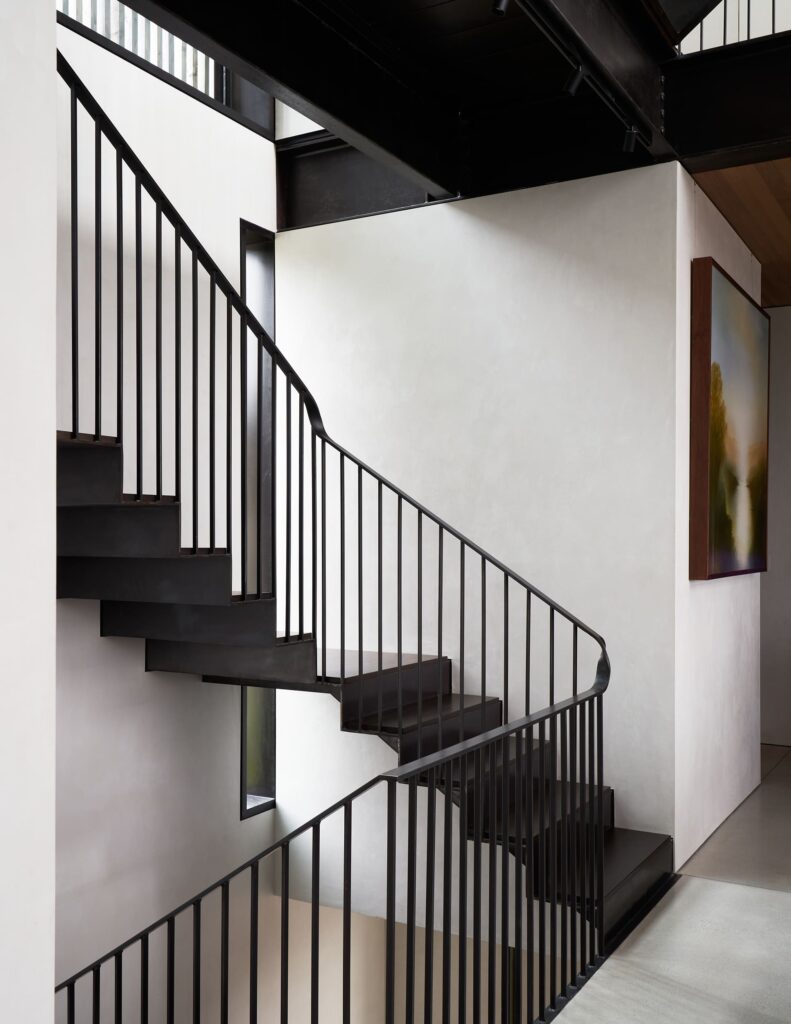
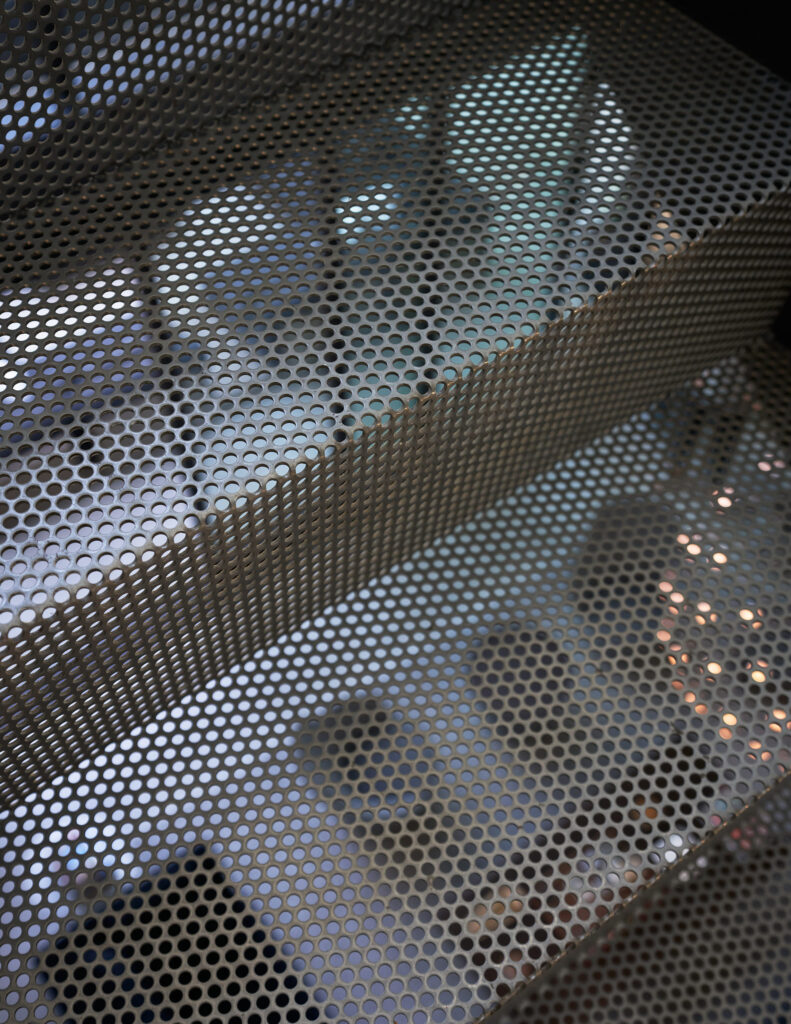
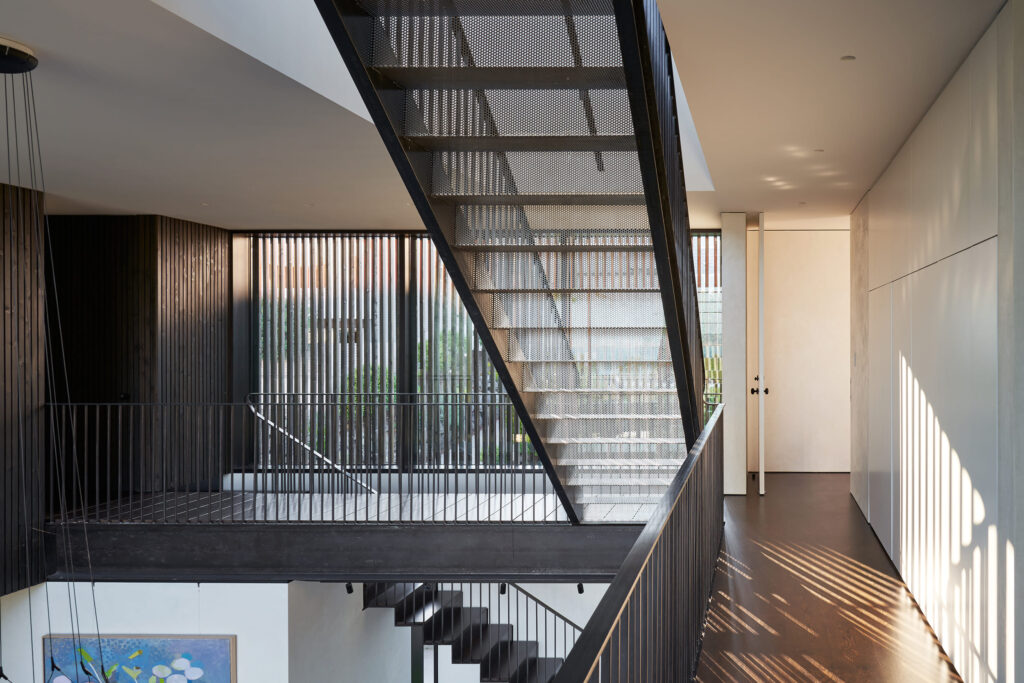
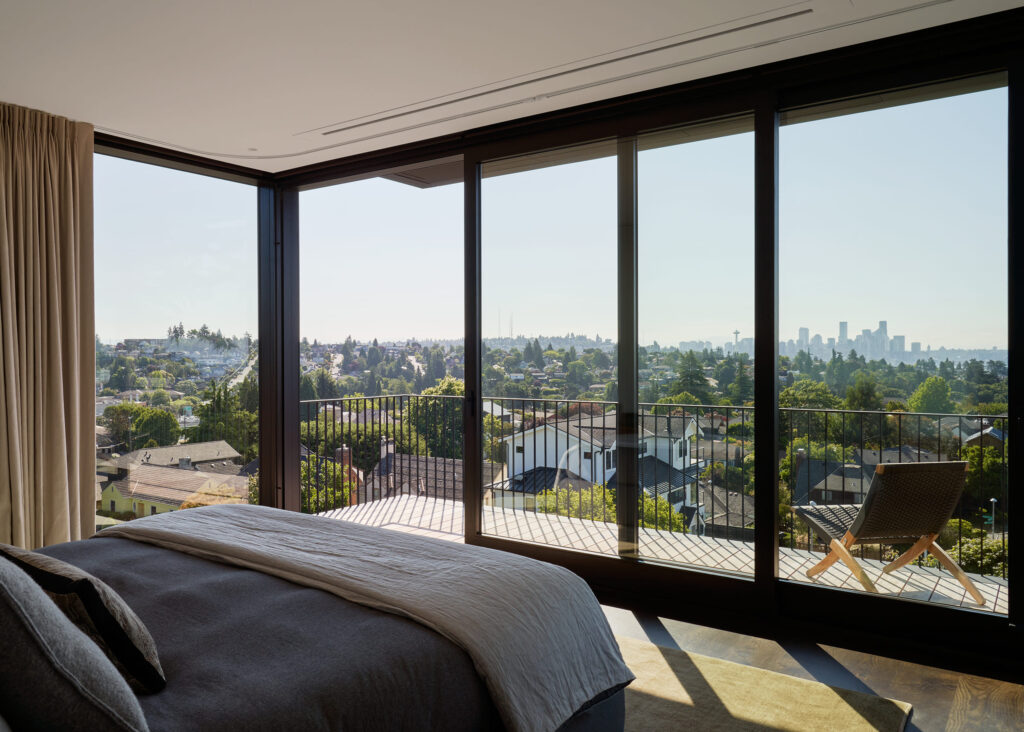
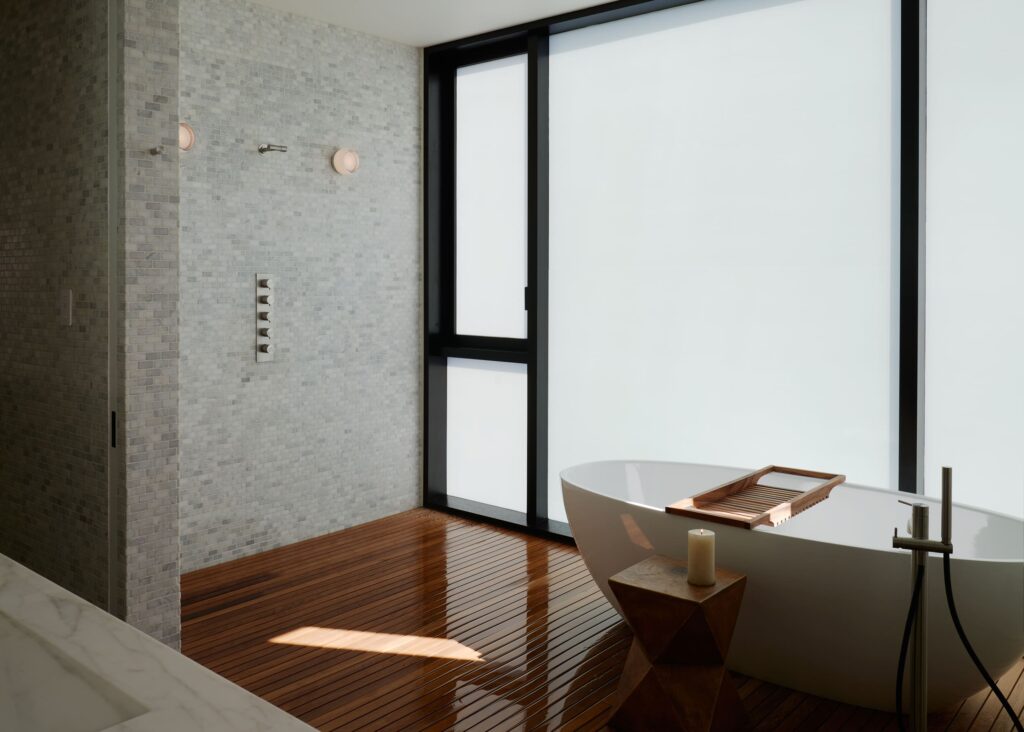
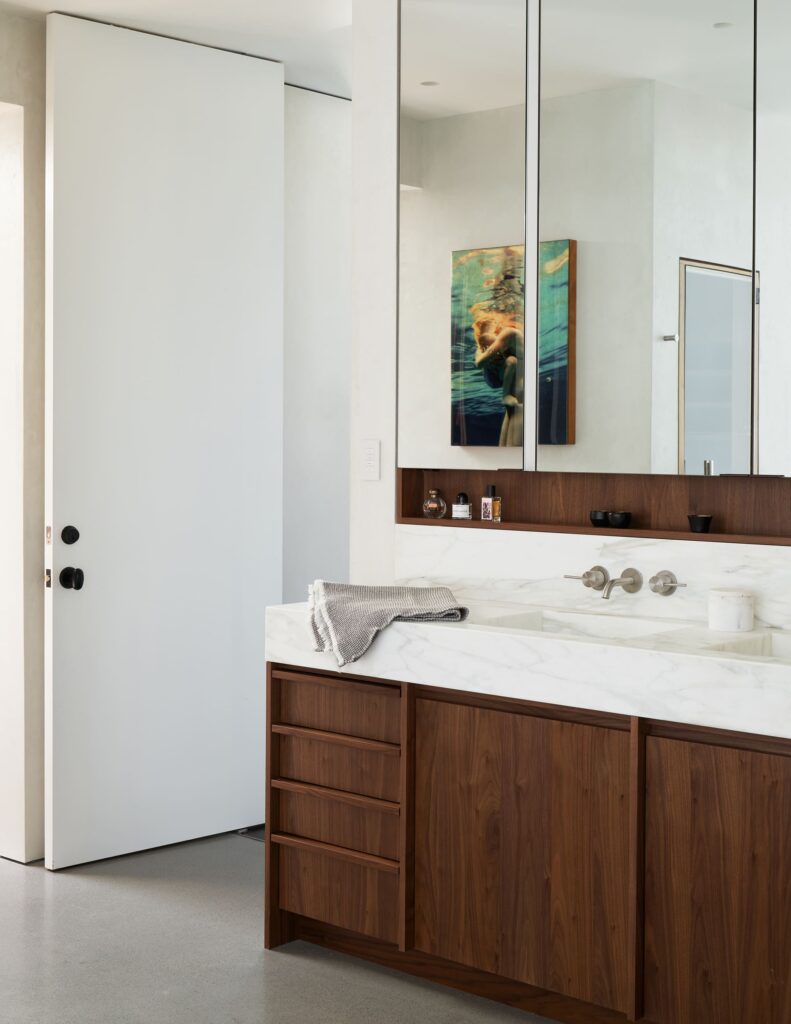
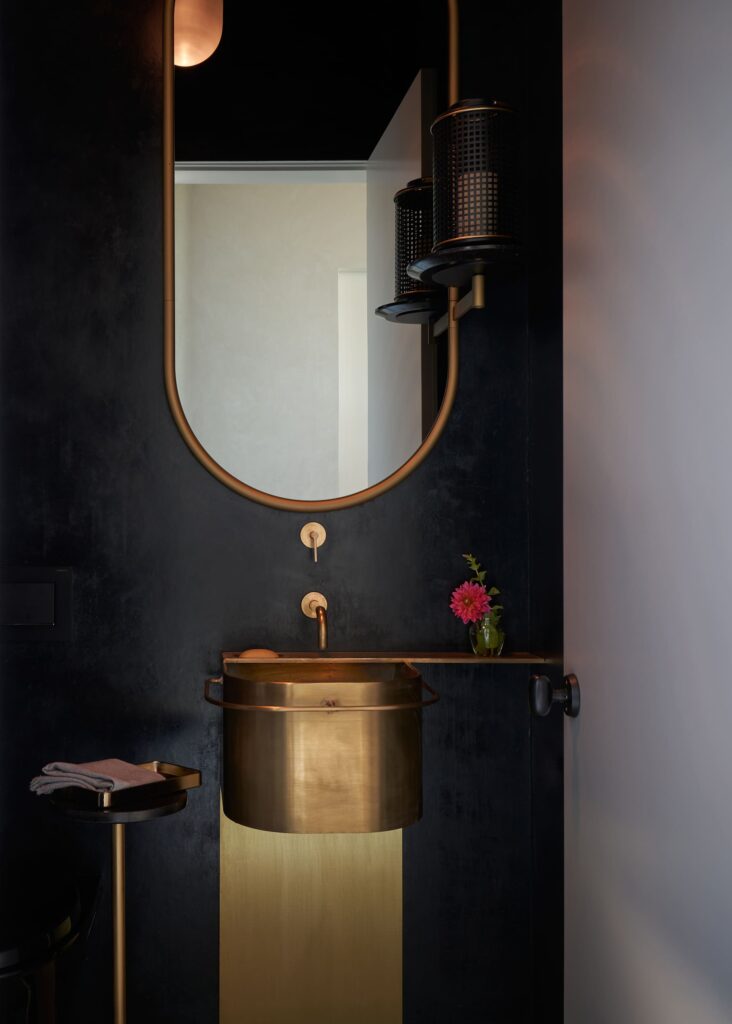
The roof serves as an additional gathering space for the family and also houses an 18-panel solar array to offset energy usage. An extensive roof garden allows the family to grow much of their own vegetables and kitchen herbs. The house is super-insulated with an exterior blanket of insulation and heated efficiently with radiant-hydronic heating throughout. The detail and design of the house was carefully considered from an urban scale down to the detail and flow of the steel handrails. Natural warmth was derived from the texture of the interior plaster, use of warm woods, and patina of the concrete and steel. It was important for the house to be both elegant and refined as well as withstand daily use from the family of eight who like to entertain.
The primary wing cantilevers dramatically out over the dining terrace and pool below. Impressive views of the city and Puget Sound are seen from the primary deck and bedroom. A luxurious primary bathroom and his/hers dressing room occupy the central section of the wing. A small office is located in the northwest corner. Accessed from the upper level bridge, a suspended staircase leads to a large roof deck and gardens. The staircase is housed within a light monitor which drops natural light down into the living room below.
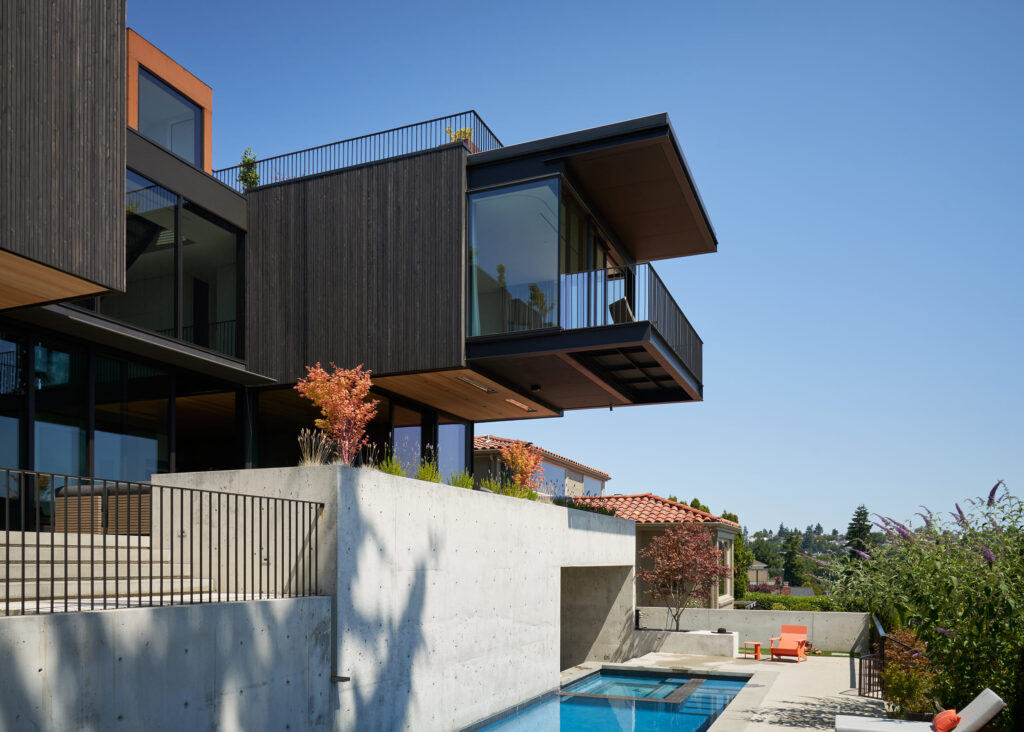
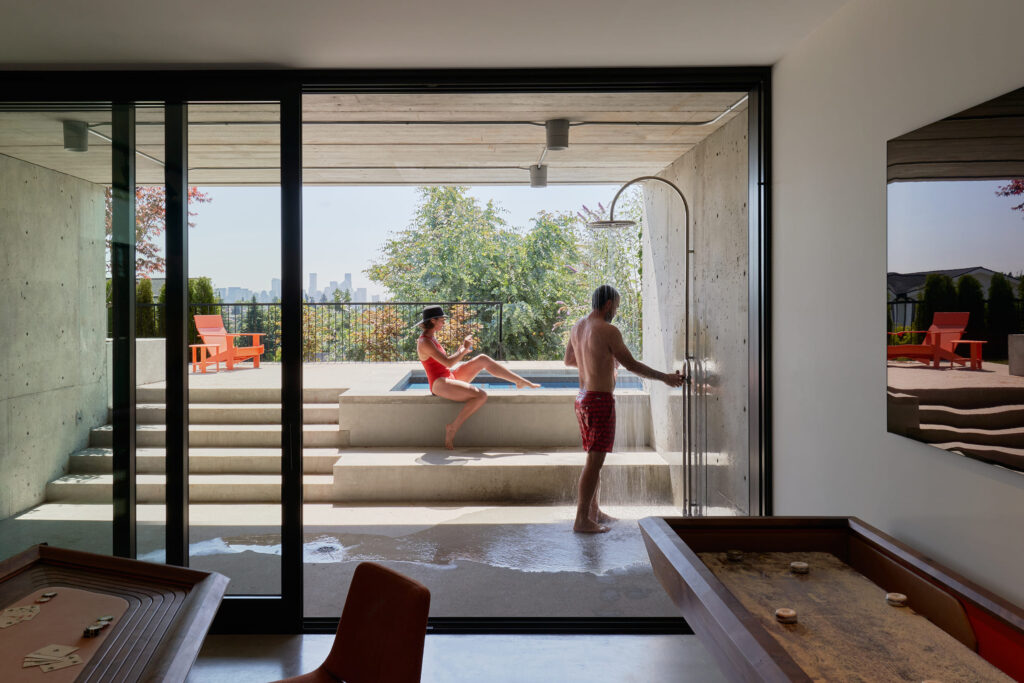
All of the beautifully crafted metal work on this project became a primary design thread that ties it all together. From the exposed structural steel to the bridge railings and stair treads all the way down to the first thing you touch with the entry door pull, the hand-crafted metalwork is evident and speaks to the level of care and craft that the architects were aiming for from the start.
Contractors Chris Thomas and Thomas Fragnoli comment: ‘We got to work with some really great makers on the job. From the steel fabricators to the cabinet builders to the plaster finishers, they are all artists and perform their craft at a very high level. They were all willing to get on board with the vision. A good example, the steel fabricators hand forged the handrail corner transitions on site, modifying them slightly as needed to make them work perfectly.’
They continue: ‘GO’C had a vision for the pool and this seamless look of the concrete retaining wall diving into the water. We got the opportunity to build something that we haven’t really seen before – the pool installers had to be brought into the design process to help realize this detail. It seems like a simple detail but there are a number of people involved and sequencing of trades to make it happen.’
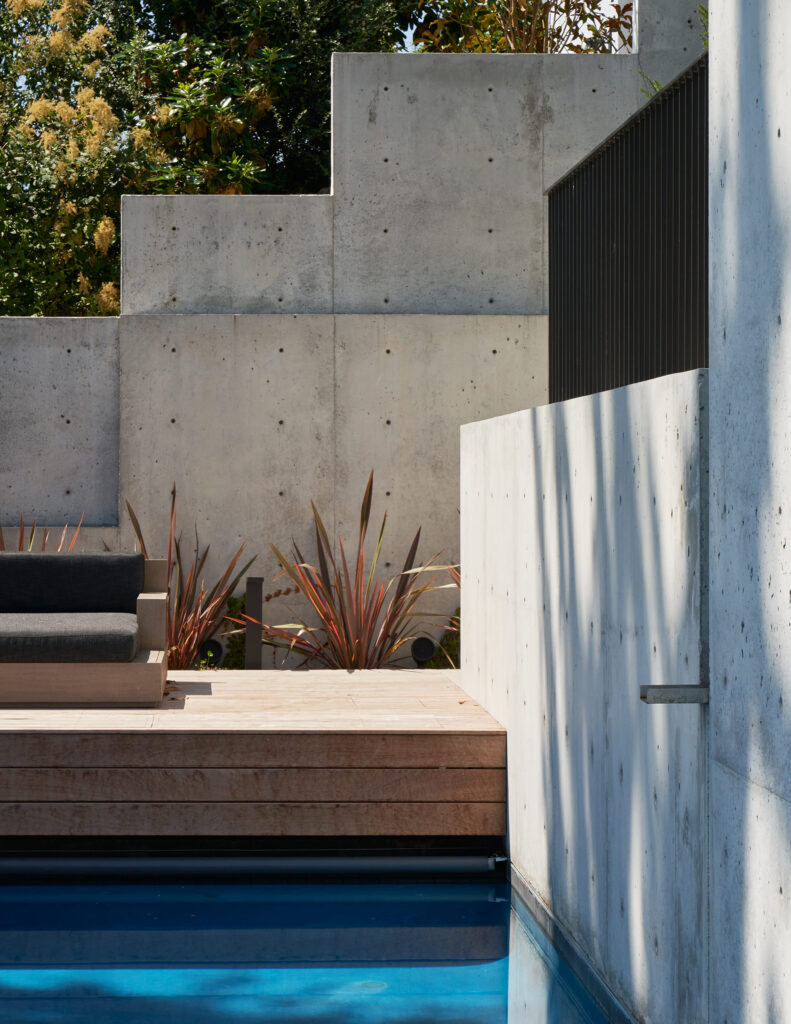
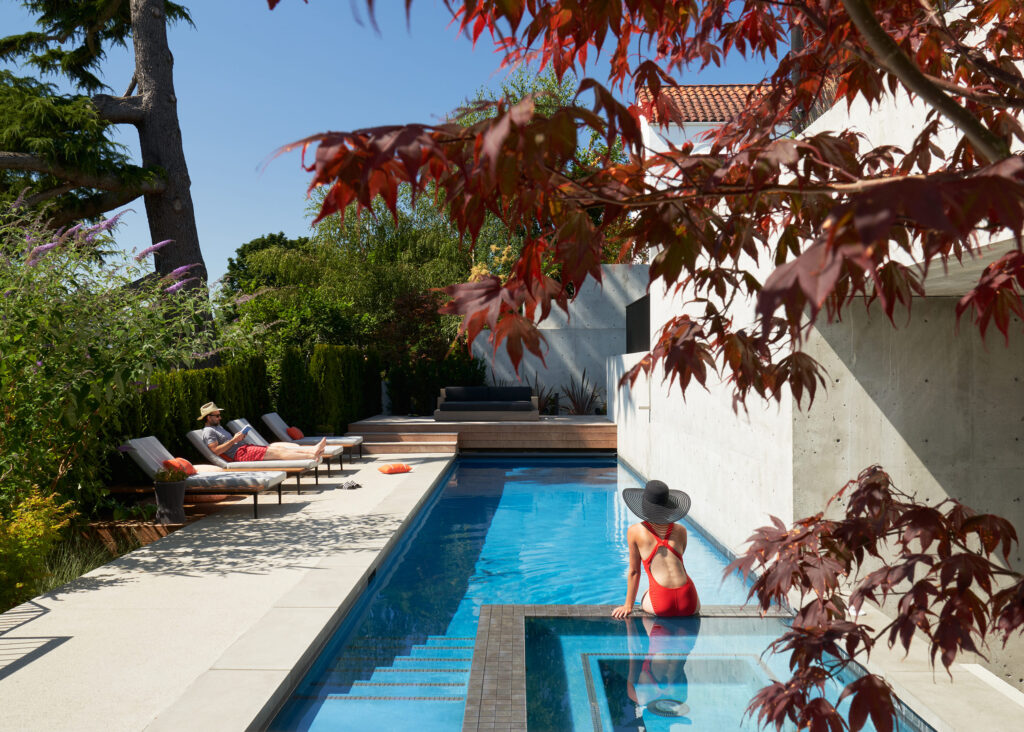
GO′C is an award-winning architecture studio inspired by the interplay of rational design and artistic expression. The enduring desire behind everything GO’C creates is to push the limits of what’s possible – in service to clients, communities, cultures, and landscapes.
Instagram: @GO_C_STUDIO | Facebook: @GOCSTUDIO
location: Seattle, WA | project team GO’C design principals: Jon Gentry AIA, Aimée O’Carroll ARB | architectural staff: Ben Kruse, Yuchen Qiu | contractor: Thomas Fragnoli Construction | photography: Kevin Scott

